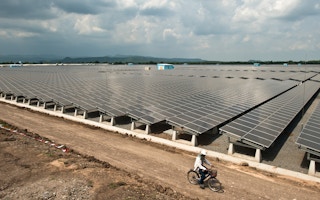Clean energy advocates believe that 100 per cent generation from renewable energy sources is the only way to meet the power demand and address global warming. That may seem right in theory and is technically feasible, but in practice the reality is that we will still need some fossil fuels to create a feasible and sustainable energy source that all countries can afford.
Renewable energy requires more upfront investment than fossil fuels, which on the other hand are cheaper to operate. Renewables also have higher risk perception for investors as well as governments. Finally, solar or wind are less reliable than coal or oil because they depend on changing weather patterns, and expensive batteries are needed to store the power for when it is needed. These three factors make a 100 per cent renewable energy mix simply too expensive for most countries.
Global energy consumption—including electricity and other sources—is expected to double in the next 40 years, and by 2030 we will likely be consuming twice as much electricity as we are now. Many climate specialists tell us we should cut greenhouse gas emissions by at least 50 per cent to prevent the most serious effects of climate change,
Allowing energy demand to continue to rise unchecked is not an option, as it would have a severe impact on energy security, costs and the environment. At the same time, we obviously can’t halve our energy consumption to combat global warming, as few consumers will be willing to give up their standard of living, and no governments will compromise on economic growth for renewable energy.
So the key is figuring out the optimal combination of renewables vs. fossil fuels in a given country’s energy strategy.
The below graph can help determine the right generation mix for a particular economy. For instance, we can see if a particular emissions reduction target is too high, and where policymakers should set realistic goals. It also highlights the need to blend several generation sources to balance initial investment and operating costs to provide a reliable electricity supply in the most economical way. Finally, it shows how emissions reductions are directly related to introducing renewables in an almost direct proportion.

OPEX = operational expenditure, CAPEX = capital expenditure. Source: Jose Antonio Aguado.
Optimal generation mix calculation is a multi-dimensional problem, as many factors influence the combination of different technologies, such as the typical load profile, price of fuel, and quality of solar and wind resources at the location. In many cases, the best solution is to combine renewable generation and storage with controllable diesel generators, as systems based on 100 per cent renewable generation require huge generators and storage systems for year-round operation.
In addition, renewable energy generation has low operational costs because it runs on “free” resources, but requires larger initial investments, while diesel is cheaper to set up and store.
When a minigrid is designed to provide year-round electricity, the mix that results in a lower cost of energy in the vast majority of cases combines diesel and renewable generation (solar photovoltaic, wind or both). The need for battery energy storage depends on the level of renewable penetration; renewable power penetrations over 40-50 per cent can cause the system to be unstable due to the intermittency of solar radiation and wind speed. Stability studies with detailed simulation models of worst-case scenarios are necessary to justify the energy storage requirements. In addition, the optimal percentage of renewable generation varies over a wide range with the location of the mini-grid due to the same factors.
The solution is therefore to push for the right mix to achieve the most efficient combination, resulting in a reliable supply of energy that is as cheap and environmentally friend as it can be.
Antonio Lopez is an energy specialist, South Asia Regional Department, ADB. Jose Antonio Aguado is associate professor and head of the department of electrical engineering at the University of Malaga in Spain. This post is republished from the Asian Development Bank blog.











